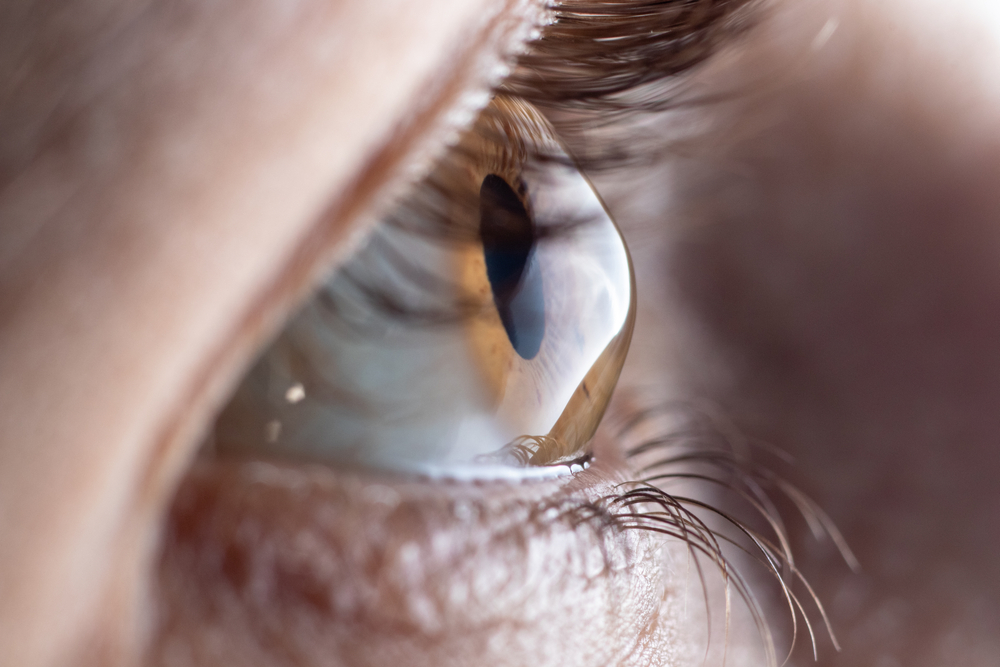
Keratoconus, a term with Greek origins where 'Kerato' means cornea and 'conus' refers to cone, is an eye condition that affects the structure of the cornea. The cornea, which is the clear outer lens of the eye, thins out and begins to bulge into a cone-like shape, a process known as ectasia. This alteration changes the cornea's refractive power, causing a varying degree of myopia and irregular astigmatism, which can result in significant visual impairment.
This condition typically first appears during a person's teens or early twenties. It can progress slowly for a decade or longer before stabilizing. Keratoconus can occur in one eye initially but usually affects both eyes. It affects both genders and all ethnicities across the globe.
What Causes Keratoconus?
The exact cause of keratoconus is unknown. Research suggests it is likely due to a combination of genetic, environmental and hormonal factors. Some studies have found a link between keratoconus and certain allergic conditions, indicating a possible immune system role.
It appears that collagen weakness in the cornea contributes to keratoconus. Collagen, a protein that helps hold the cornea in place and keep it firm, can become weaker due to enzyme imbalances within the cornea. This weakness allows the cornea to bulge outwards.
The First Line of Keratoconus Treatment
Contact lenses are often the first line of treatment for keratoconus. They can help to re-shape the cornea and improve vision. There are several types of contact lenses that may be used, including rigid gas permeable (RGP) contact lenses, hybrid contact lenses, and scleral lenses.
RGP lenses are rigid and maintain their shape, providing a smooth surface to correct the cornea's irregular shape. Hybrid lenses combine a rigid center with a soft periphery, providing the crisp vision of RGP lenses and the comfort of soft lenses. Scleral lenses are larger contact lenses that rest on the sclera, the white part of the eye, and provide a smooth surface over the irregularly shaped cornea.
The type of lens recommended will depend on the severity of the keratoconus and the individual's comfort with lens wear.
Surgical Treatments for Keratoconus
When contact lenses no longer provide satisfactory vision, or they become uncomfortable to wear, surgical options may be considered for keratoconus treatment.
One such option is corneal collagen cross-linking, a procedure that strengthens the corneal tissue to halt the bulging of the eye's surface. In some cases, intracorneal rings, tiny plastic inserts placed just beneath the eye's surface, are used to flatten the cornea, changing its shape and improving vision.
In advanced cases, a corneal transplant may be necessary. This procedure involves replacing the diseased cornea with healthy donor tissue.
Each surgical option has its advantages, risks, and recovery times. Therefore, it's important to discuss these with your eye care professional before making a decision.
Choosing the Right Keratoconus Treatment Option
Keratoconus can be a challenging condition to live with, but with the right treatment, its progression can be managed effectively. The best keratoconus treatment for you will depend on your individual circumstances, including the severity of your condition, your lifestyle, and your personal comfort. Consult with your eye doctor, they can provide you with the information and resources you need to make an informed decision about your keratoconus treatment.
For more information on common treatment options for keratoconus, visit Clarity Vision at our office in Williamston, North Carolina. Please call (252) 792-2250 to schedule an appointment today.
















